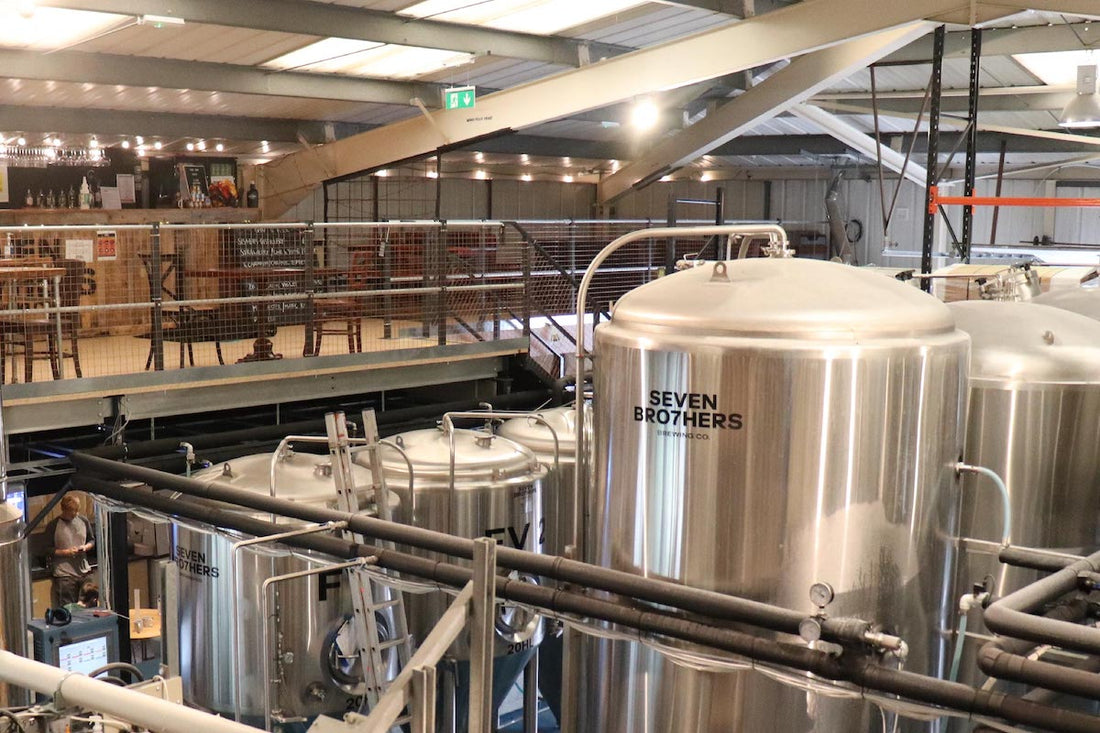Love, care and a little bit of magic. Right? While we do reckon that’s true, you’re probably wanting something a little more practical.
The ingredients in mankind’s greatest invention – beer – are surprisingly simple. It’s the different combinations of these ingredients that creates the huge variety you’ll see spread across supermarket shelves and taproom menus.
Let’s start at the start. Beer is made from four ingredients: grains, hops, yeast and water.
Grains
The grains used in beer are usually malted barley (barley grains that have been soaked in water). The starches from these are turned into sugars which interact with the yeast to make alcohol during the fermentation process.
Grains in beer affect a number of factors. The colour of the grains will drive the colour of the final drink, whether that’s a light blonde lager or a stout that’s dark as the night sky.
Other components in the beer called dextrins affect the viscosity of the drink (thickness, as opposed to wateriness). Also known as the mouthfeel. And the proteins they contain contribute to the thickness of the head on top of your pint.
And, of course, they affect the flavour. The malt flavour is one you’ll notice in contrast to the hops. ‘Malty’ beers tend to be darker, stronger and sweeter.
Hops
Hops are the flowers of the hop plant, Humulus lupulus. The job of hops is to work as a bittering, flavouring and stability agent within the beer. They’re usually added to the boil stage in brewing, where the necessary compounds within them are brought out under heat.
The hops used can wildly affect the flavour of the end product. Their bitter taste is necessary to balance out the sweetness of the malt, but they also come with a load of flavours that add complexity to the flavour range. This works for your nose as well as your tongue – hops make the aromas of a freshly-brewed beer come alive, coming from essential oils within the plant itself.
As you try a range of beers, you’ll get used to what a ‘hoppy’ taste is – it’s particularly noticeable in IPAs.
Finally, hops have another supremely useful function – stability. Beer’s shelf-life is rather long because they have an antibacterial effect, defeating certain microorganisms that don’t do the brew any good.
Hops have been used in beer-making for centuries, and their first documented use is from way back in the 9th century. Previous to that, folks would have tried a bunch of different bitter herbs and flowers, like dandelion, burdock root and marigold. Once the joy of hops was discovered, though, brewers didn’t look back.
Yeast
Yeast is the third really important ingredient. Yeast is a fungal microorganism – a living being that’s used in the fermentation stage – converting carbohydrates (sugars) into alcohol.
All beers are either lager or ale. The difference lies in the yeast and the temperature they’re fermented at. Lager usually makes use of ‘Saccharomyces pastorianus’, a bottom-fermenting (colder temperature) yeast. Ale normally uses ‘Saccharomyces cerevisiae‘ (sometimes called Brewer’s Yeast) and is top-fermenting (done at warmer temperatures).
Water
Water is our final ingredient. Not too surprising, really – without it, beer wouldn’t be much of a drink. Beer is around 90% water, which is why it’s so refreshing on a hot day (and why pubs have bathrooms, of course). There’s not much else to say about water in beer, other than it obviously needs to be really high-quality. Top brewers will concern themselves with the sourcing of their water, because the mineral content within will affect the final taste. Running it straight from the tap probably won’t make for the world’s best beer.
